MUST KNOW QUESTIONS TO ASK DOG BREEDER
There are questions to ask a dog breeder to examine whether they are producing quality puppies!
We hear often from people who brought a puppy home from a bad dog breeder, an unethical or back-yard breeder and said ‘I just didn’t know any better’.
Breeding dogs should be something for responsible dog breeders, NOT for everyone. Likewise, a new puppy owner should be educated on what puppy is the right puppy for them, be sold a healthy puppy, and be prepared to take care of them for the entire puppy’s life.
Questions to Ask Dog Breeder

Responsible breeders LOVE to answer questions from puppy buyers!
Reputable dog breeders pour their life and heart into their new puppies. A dog breeder who is hesitant to answer questions is NOT a good breeder!
Puppy buyers should never be afraid to ask ALL of the questions, as a legitimate breeder will love to discuss all of your wonderings.
QUESTIONS FOR YOUR DOG BREEDER
- Does the mom and dad have temperament testing?
- Do the puppies come with a health guarantee?
- Are there health certificates to show the health tests that have been done on the mom/dad?
- What is the breed’s temperament?
- Are there any genetic diseases in the genes?
- Are you able to visit the breeder’s home and see the puppies in real life?
- How many dogs does the potential breeder own?
- Is the dog breeder apart of a kennel club?
- Are you able to speak with previous puppy buyers?
- Does the breeder own the puppy’s parents?
- Do the puppies get taken to vet visits?
- Do the puppies and dogs get socialized from a young age, and if so what are the methods?
- How many litters has the female and stud dog had?
RESPONSIBLE BREEDERS VS. BACKYARD BREEDING
Whether we like it or not, bad breeders are out there. They are everywhere. Some are even scams: they just want your money and have no puppies to sell at all.
Off Color and Designer Great Danes
Bad Breeders
Scam Breeders: What to Look For
Breeders: Shady Business
Should I Choose a Breeder or Rescue?
Choosing a Dog From a Show Breeder
What Makes a Breeder Good?
Find a Great Dane Breeder
If you are looking for your next (or first!) Great Dane puppy, we wrote this post for you. Just because a breeder has puppies doesn’t mean that they are operating ethically or selling healthy puppies that were raised with care.
Look for Red Flags When You Are Getting a New Puppy

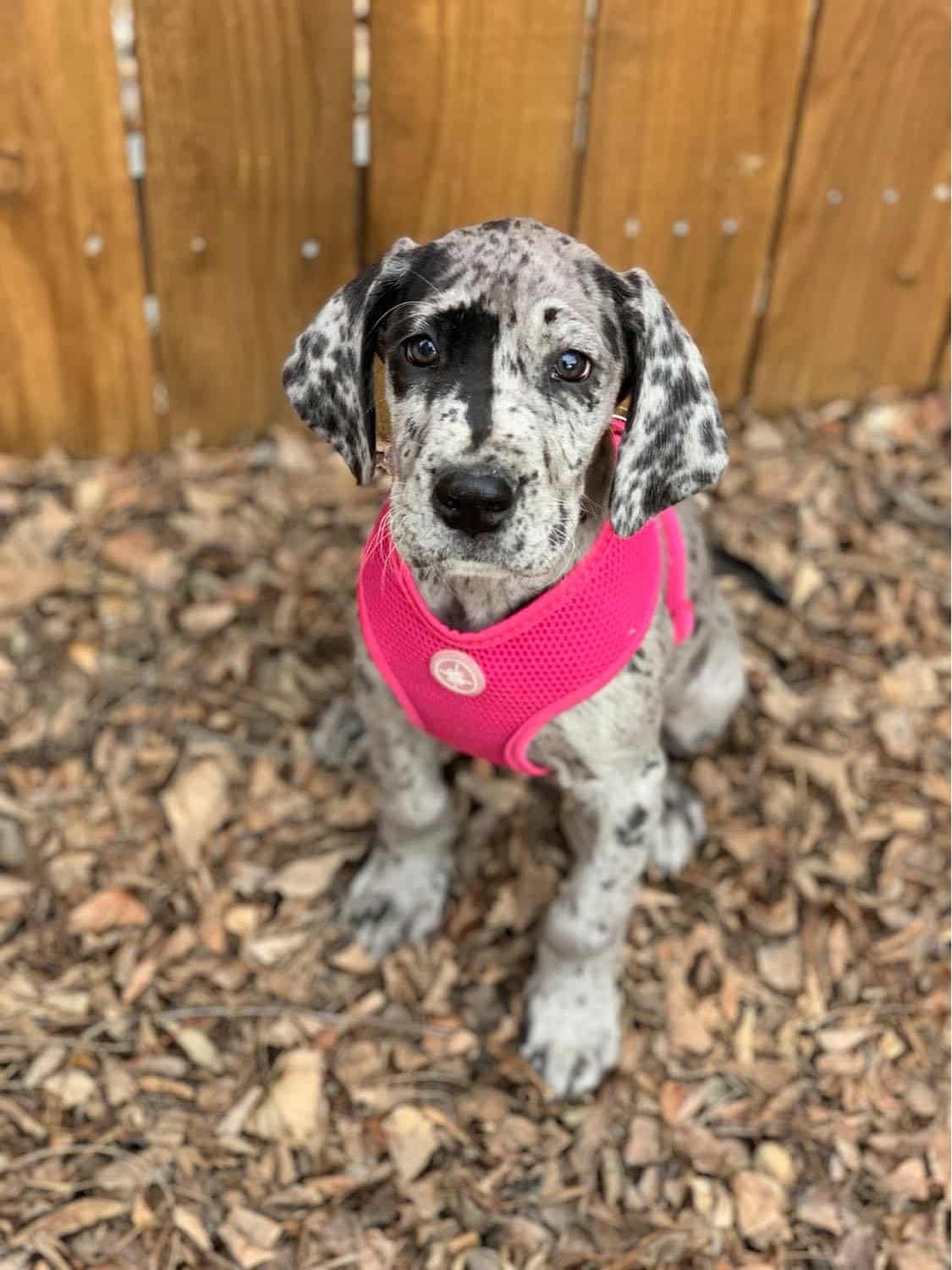
Responsible breeding is not easy to do. Dogs and puppies cost a lot of money and time to care for properly. If a breeder is not asking questions about you and your home, they may not be as interested in finding the best homes for their puppies as they should be.
A responsible dog breeder will:
- Be able to tell you about the temperament of the parents and grandparents
- Have done health testing on the parents
- Ask you a lot of questions about your home and family
- Help you to pick the right puppy for your lifestyle
- Give you a contract that outlines their health guarantee and terms of sale.
When you are looking for a breeder for a puppy, look for ‘red flags’ to help you identify the reputable breeders from the ones who may not be the right breeder for ou.
RED FLAG NUMBER 1: The breeder has no name or a bad name in the local community.


Search your local Great Dane board on Facebook or the internet. Look up your local Great Dane breed club. Visit the GDCA website and search their database. We also recommend searching in the Great Dane Bad Owners Breeders & Information page.
Keep in mind that just because people might know about your breeder or may even recommend them, does not mean that they don’t have other red flags!
A newer responsible breeder may not have an established presence, but if they are operating ethically, they are working under the mentorship of other breeders and will have a reputation that way.
It is ultimately the breeder’s responsibility to make connections within the breed clubs and find mentors that will help them produce the best puppies for their puppy buyer.
RED FLAG NUMBER 2: No or limited OFA Health Testing.
Breeders that invest in OFA health tests are more likely to be interested in the breed standard and health as a whole. When both parents have been fully tested, they are less likely to pass on painful, preventable, and sometimes life-threatening conditions such as hip displasia, thyroid disease, and cardiomyopathy. Ensuring that your puppy has a health certificate can be the difference between many breeders who are breeding solely for financial gain vs. buying a puppy from a reputable breeder who wants to better the breed.
Ask the breeder for the CHIC # for both dogs contributing to the litter. If they cannot give you this number, don’t have it, or you cannot verify it in the database at www.ofa.org, it is a MASSIVE red flag.
Outside of the U.S. the process for this will be different, however, it is a red flag if the breeder doesn’t complete at minimum x-rays, echocardiograms, eye exams and blood work to check for hip dysplaysia, elbow dysplays, eye disorders, thyroid disease and cardiac problems on both dam and sire.
Expect NOTHING less. A vet check is NOT health testing.
RED FLAG NUMBER 3: They seem desperate, too ‘perfect and impersonal’ or require a deposit provide more information.



Desperation is a classic breeder red flag that may also indicate that the breeder is a scam and may not even have real puppies to sell you.
If they seem pushy and offer high-pressure sales, list off all of the triggers (‘Health tested’, ‘Raised in a Home’, ‘Comes with a Leash and Collar’, ‘Snuggly and cute’), and seem to have very little interest in making sure you are the right home for the dog, tread cautiously.
Great dog breeders don’t have the capacity to get an entire litter of puppies potty trained, leash trained, and even ‘fully trained’ before sending them home. Yes, a responsible breeder can get started on these things and other dog related activities, but it is ultimately up to the puppy’s parents to finish these tasks1
A breeder should NEVER require you to place a deposit before answering your questions, and good breeders are exceptionally picky about buyers. You should have to work a little to prove yourself. If it’s the other way around, be wary.
RED FLAG NUMBER 4: The breeder won’t show the parents, or the parents are aggressive, look sick, or don’t look like Great Danes or the breed.
A professional breeder is proud of their Dam and Sire dogs. They keep them in a home environment and make sure that they are healthy, clean, and well-cared for.
Run from any breeder that won’t show you the parents, or if you see that the parents are kept in a kennel/barn, are not well-kept or lack breed type. It is unacceptable to see dogs being bred that have roached or sway backs, narrow hips, minimal substance, flat feet and overall poor structure. The parents should be excellent example of breed type in both structure and temperament.
If you aren’t sure, reference the written breed standard.
RED FLAG NUMBER 5: The puppies are sick, weak, timid, roached or are knuckling and have flat feet.
Ask to see photos and videos of the puppies often as they are raised.
They should have plenty of substance (they should not appear wimpy or scrawny), great structure, nice head shapes and large, solid tight well-knuckled feet.
A reputable breeder will be exposing them to a variety of textures and obstacles (ramps, tunnels, boxes, grass, tile, gravel, etc.) that help build their confidence and strength. Additionally, the breeder should keep the puppies clean and trim their nails often.
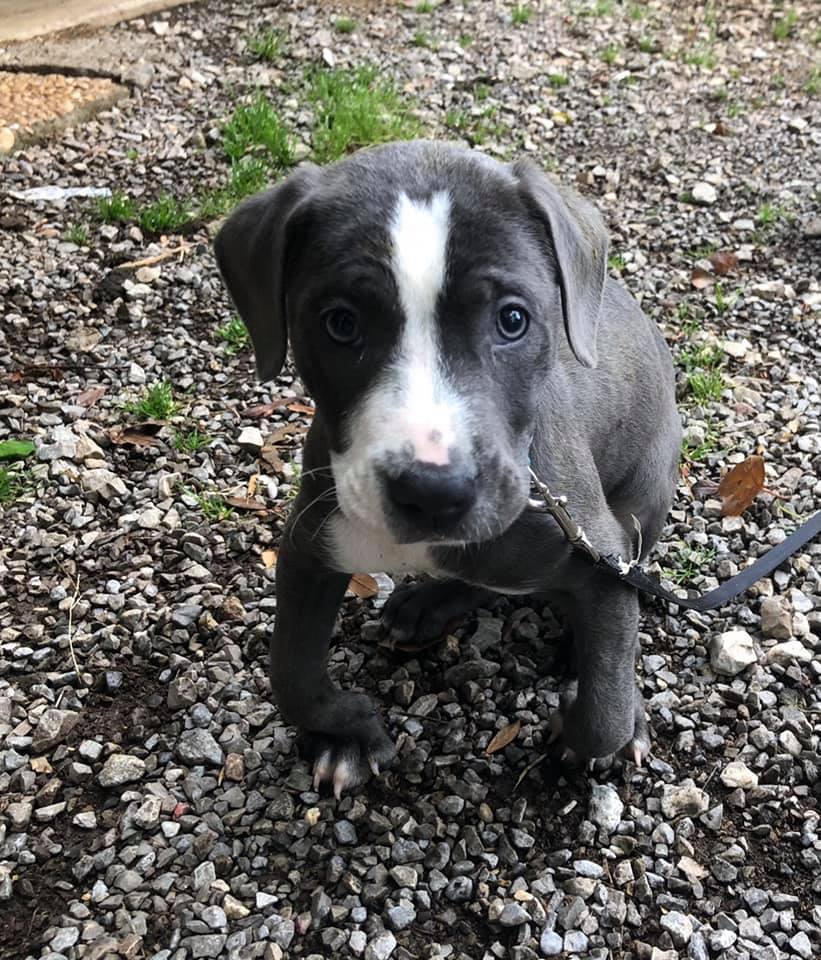
IS YOUR GREAT DANE PUPPY KNUCKLING?
Check out our science-based and constantly growing knuckling resource page.
Timid or ill-tempered puppies (those that resource guard or are pushy and rude) often become timid and ill-tempered adults.
Quality breeders work very hard through thoughtful breeding practices and socialization to make sure puppies have excellent substance and temperaments.
KNUCKLING IN GREAT DANES RESOURCE PAGE
How to Prevent Knuckling in Great Danes in 7 Easy Steps
Is My Great Dane Puppy Knuckling?
Ideally you want to see that the puppies are curious, stand up tall and appear enthusiastic and healthy.
If you notice something looks off about the entire litter, there could be something amiss with the breeder. A whole litter getting sick is a red flag.
RED FLAG NUMBER 6: The breeder doesn’t have a contract or lifetime breeder support and return guarantees.
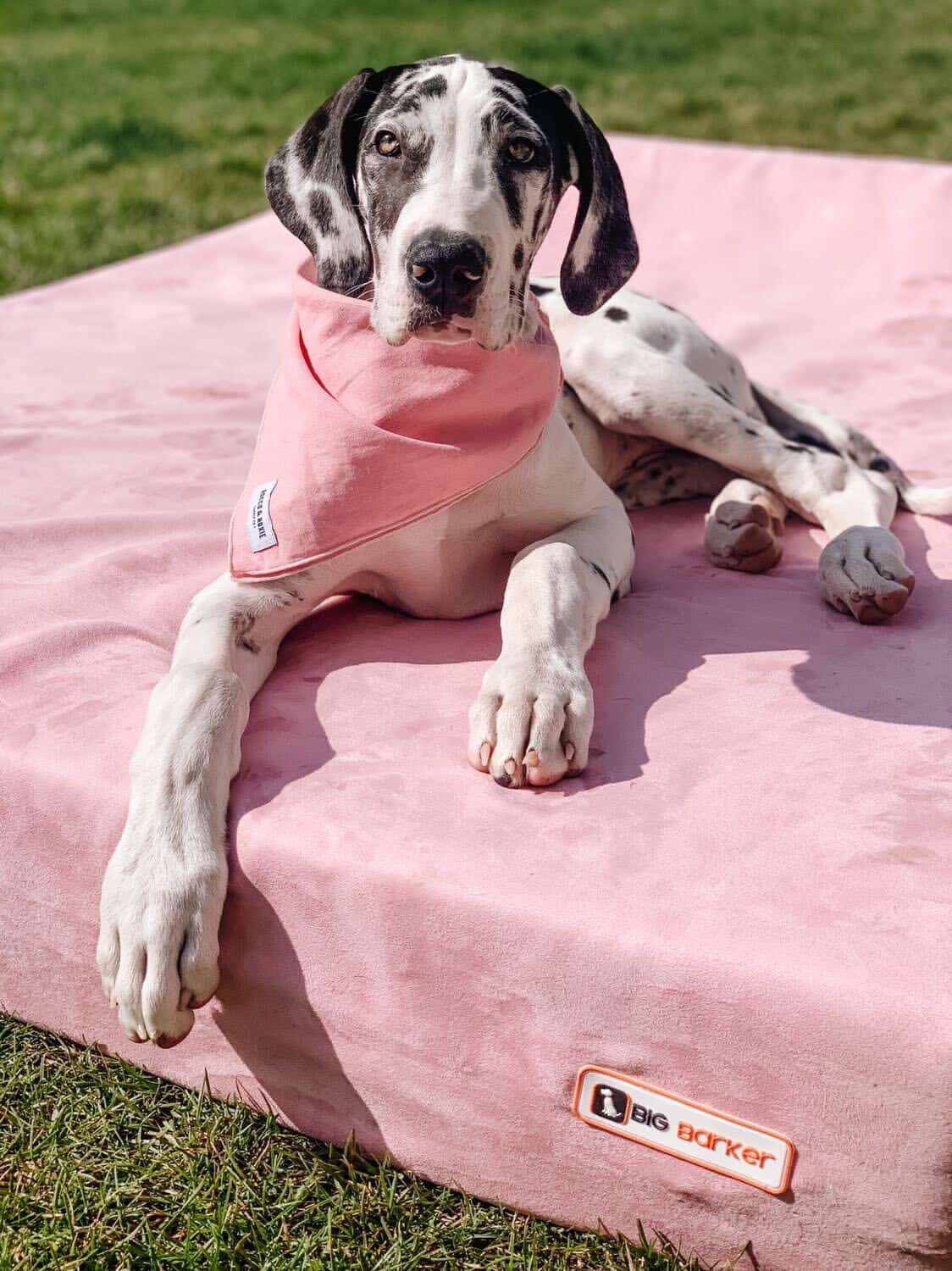
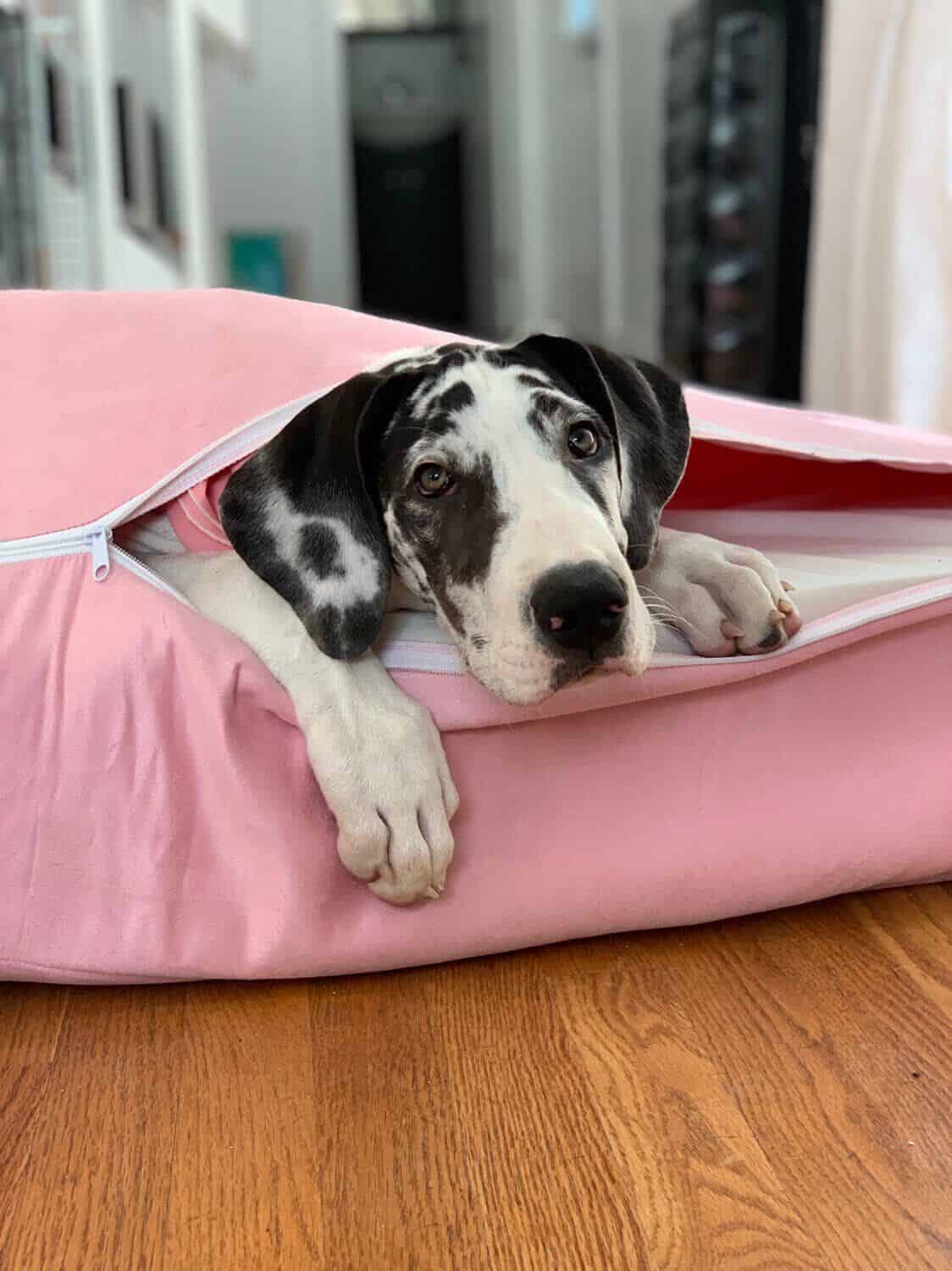
Don’t get sucked into the line that the dog breeder is ‘desperate’ or ‘has cancer and cannot offer support’. Dog breeders who do this solely for the money will make up all kinds of lies to tug at your heartstrings.
Ethical breeders care very much about their puppies and never, ever want them surrendered or ending up in rescue. Run from any breeder that doesn’t state in the contract that they want the dog back for any reason.
The contract will also outline breeding rights, spay/neuter timelines, and care guidelines. A dog breeder who truly cares about their dogs will be there for the entire dog’s life. Buying a puppy from a good breeder is not ‘a moment’, but a relationship!
When to Spay a Female Great Dane
RETURN POLICY OF PUPPY
The dog breeder should require you to return the dog to them if you are unable to keep it for some reason.
As a dog owner, this gives you an opportunity to return the dog to a safe place (the breeder who can then rehome him or her) if needed, instead of dumping the dog into the lap of our already strained Great Dane rescue system. If the breeder doesn’t offer lifetime support and at least a 2 year guarantee warranting the dog against certain health problems, run.
RED FLAG NUMBER 7: The dog breeder allows the puppies to go home prior to 8 weeks of age.
Inexperienced or careless breeders may claim that the mom ‘lost interest’ and ‘isn’t caring for the puppies’ around the time that the puppies naturally wean from the mother.
Why Great Dane Puppies Should Stay with the Litter Until 8 Weeks
Puppy Culture – Early Socialization for Great Dane Puppies Before and After 8 Weeks Old
How to Care for a Great Dane puppy
The mother may snap at the puppies to remind them to stop nursing or to correct them for being rude, and breeders will use this as an excuse to send the puppies home weeks before they should be leaving their mom.
The communication the mom gives the pups, and the communication the pups give each other is an incredibly important part of their development.
Puppies that go home prior to 8-10 weeks are extremely immature and struggle with bite control and potty training. There is rarely a reason for a puppy to go home earlier than this; if the mom is truly exhibiting dangerous aggressive behavior towards the pups, she should not have been bred.
Be patient and hold your dog breeder to a higher standard!
Puppy Socialization
Puppy Culture: A Way to Socialize from the Start
Puppy Socialization Guide
Puppy Training: 5 Mistakes in Training
Canine Good Citizen Training for Great Danes
Your Puppy is Bored
How to Choose the Best Dog Trainer
Schedule for Bringing Home a Great Dane Puppy
RED FLAG NUMBER 8: The dog breeder bred two dogs with merle/spot patterns/genes.
It is extremely unethical to breed two Great Danes that have spot/merle patterns.
Doing so runs an extremely high risk that a significant number of puppies in the litter will receive BOTH copies of the merle/spot gene.
Double Merle puppies can be deaf, blind, or may have allergies and other health conditions. In the right hands these dogs can live a wonderful life, but many of them are either euthanized or end up in rescue and have questionable temperaments and high veterinary bills.
It is very important when buying a puppy to be able to see a full health certificate of all of the dogs within their genetics to make sure that your puppy was not the result of a double merle breeding.
DOUBLE MERLE GREAT DANE DOGS
Double Merle puppies are preventable. Make sure your breeder only pairs genetically proven (through testing) solid colors (such as mantle, black or blue) when breeding to a harlequin, merle or piebald dog.
Did you buy from a ‘red flag’ breeder? We’d love to hear your experience!





READ MORE:
Blue Great Danes – Facts, Photos, and Care
The Top 5 Adorable Facts About Great Dane Brindle Dogs
Black Great Dane Puppy – An Adorable Addition to Your Family
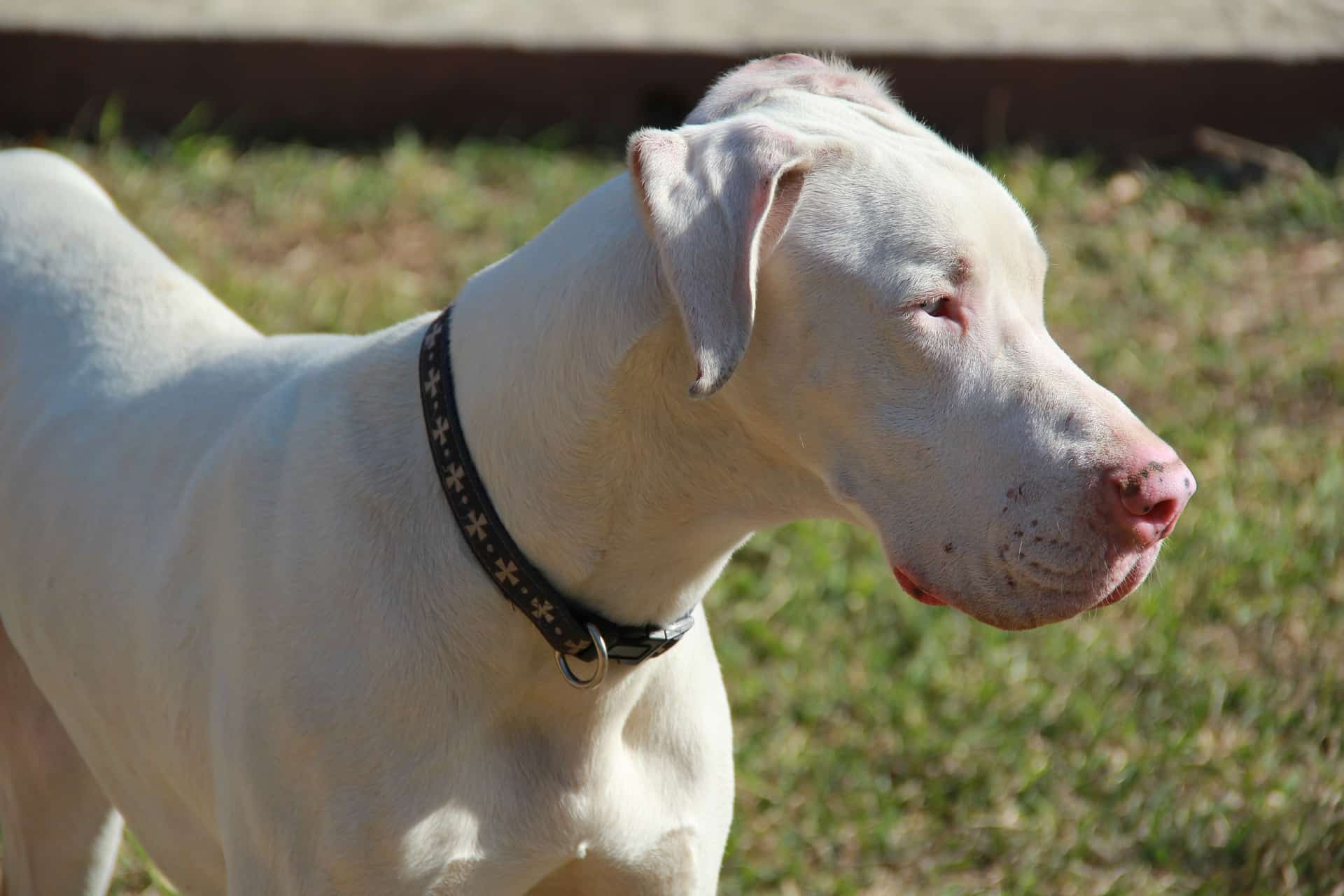
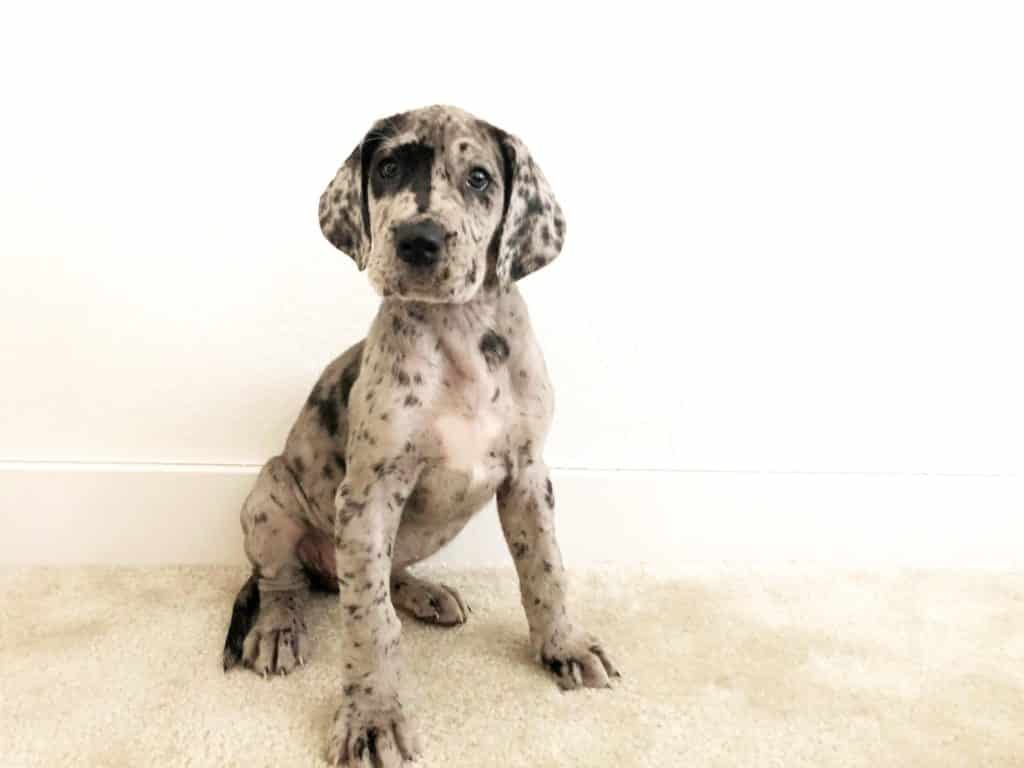
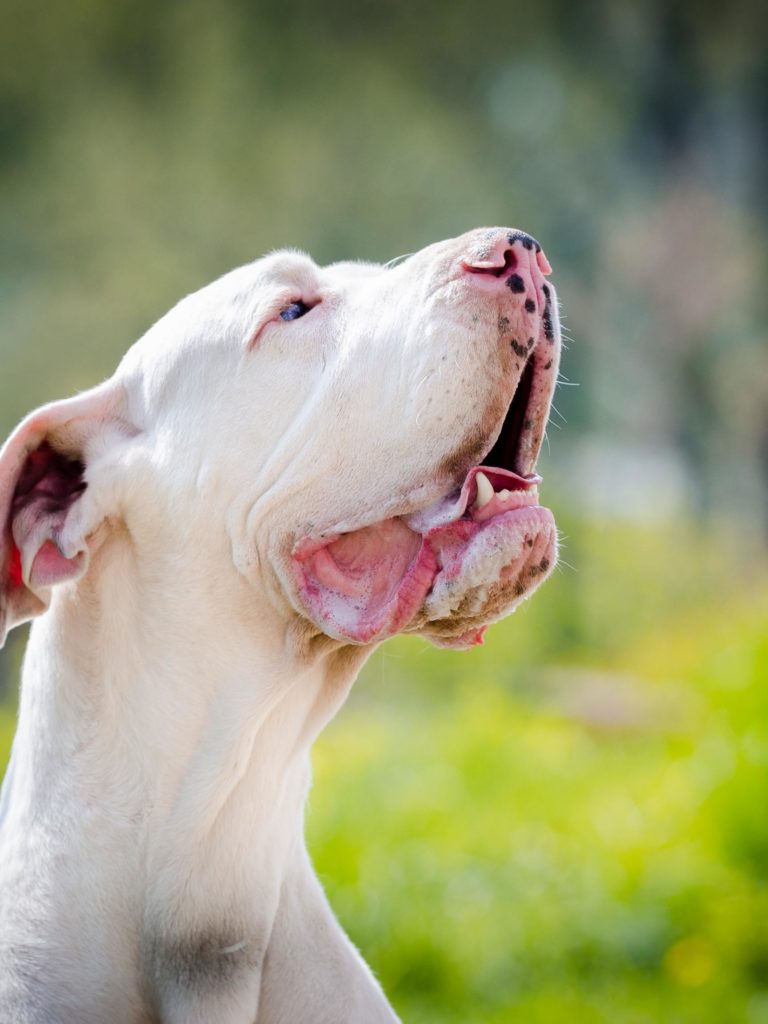
Leave a Reply